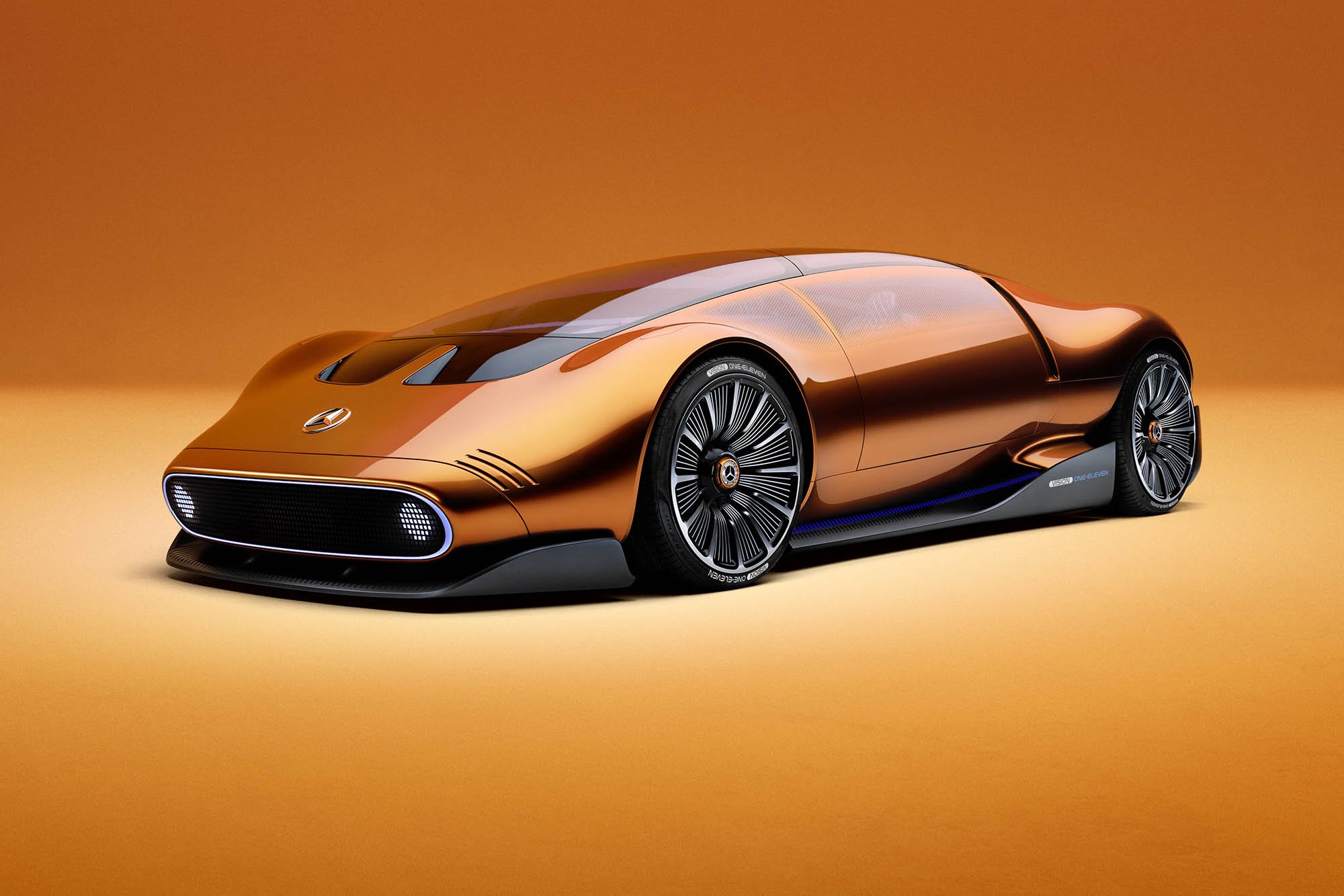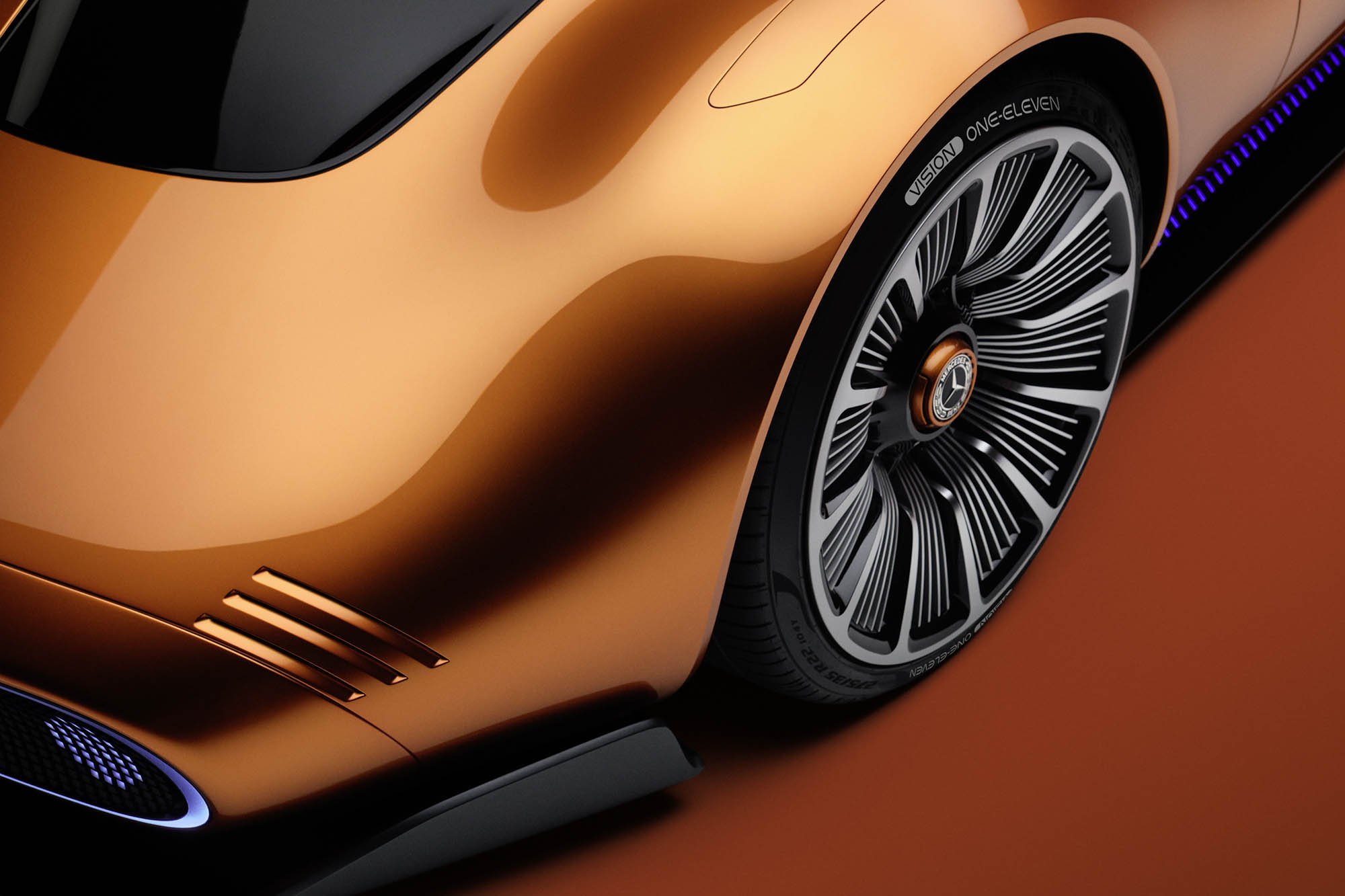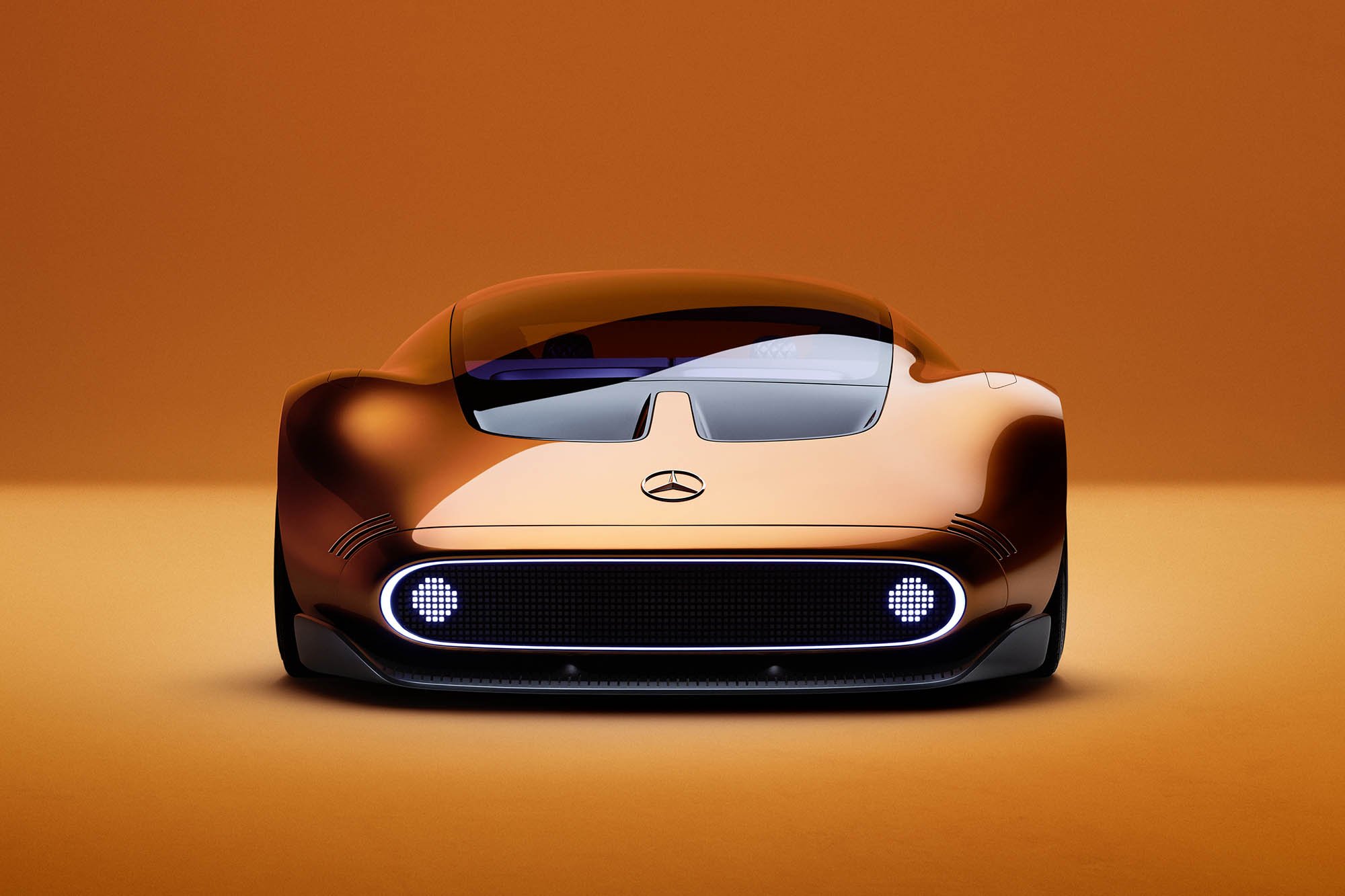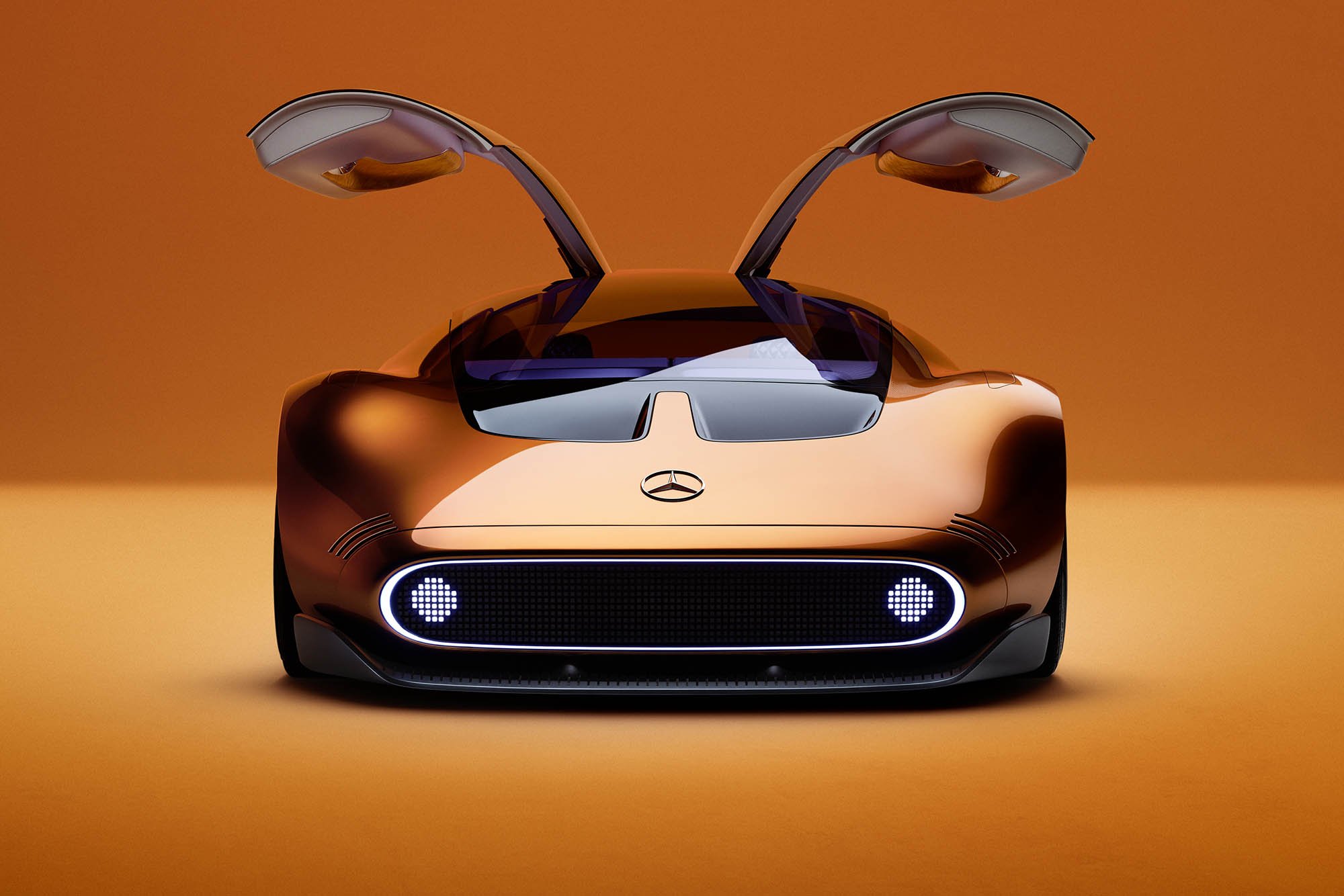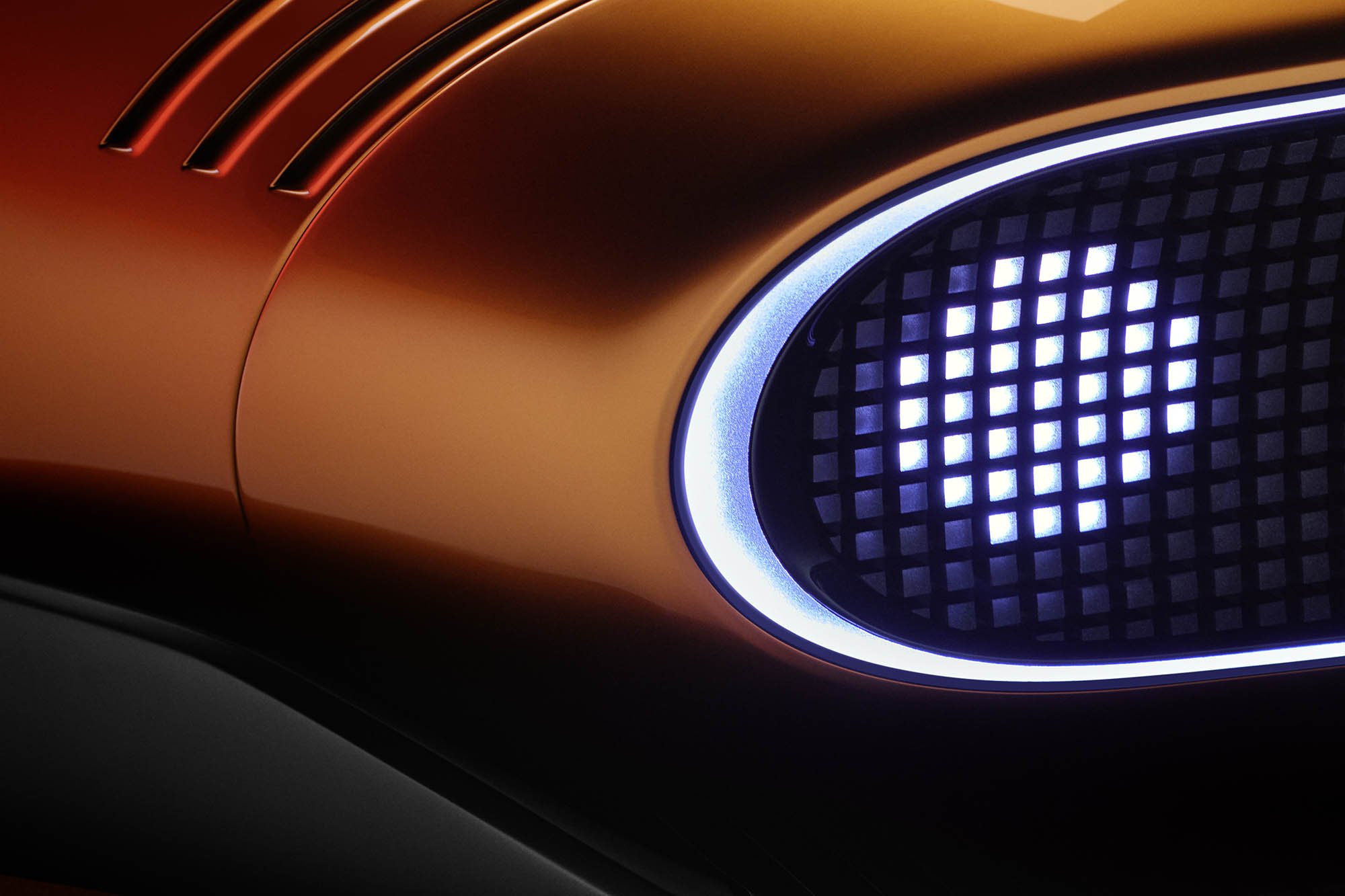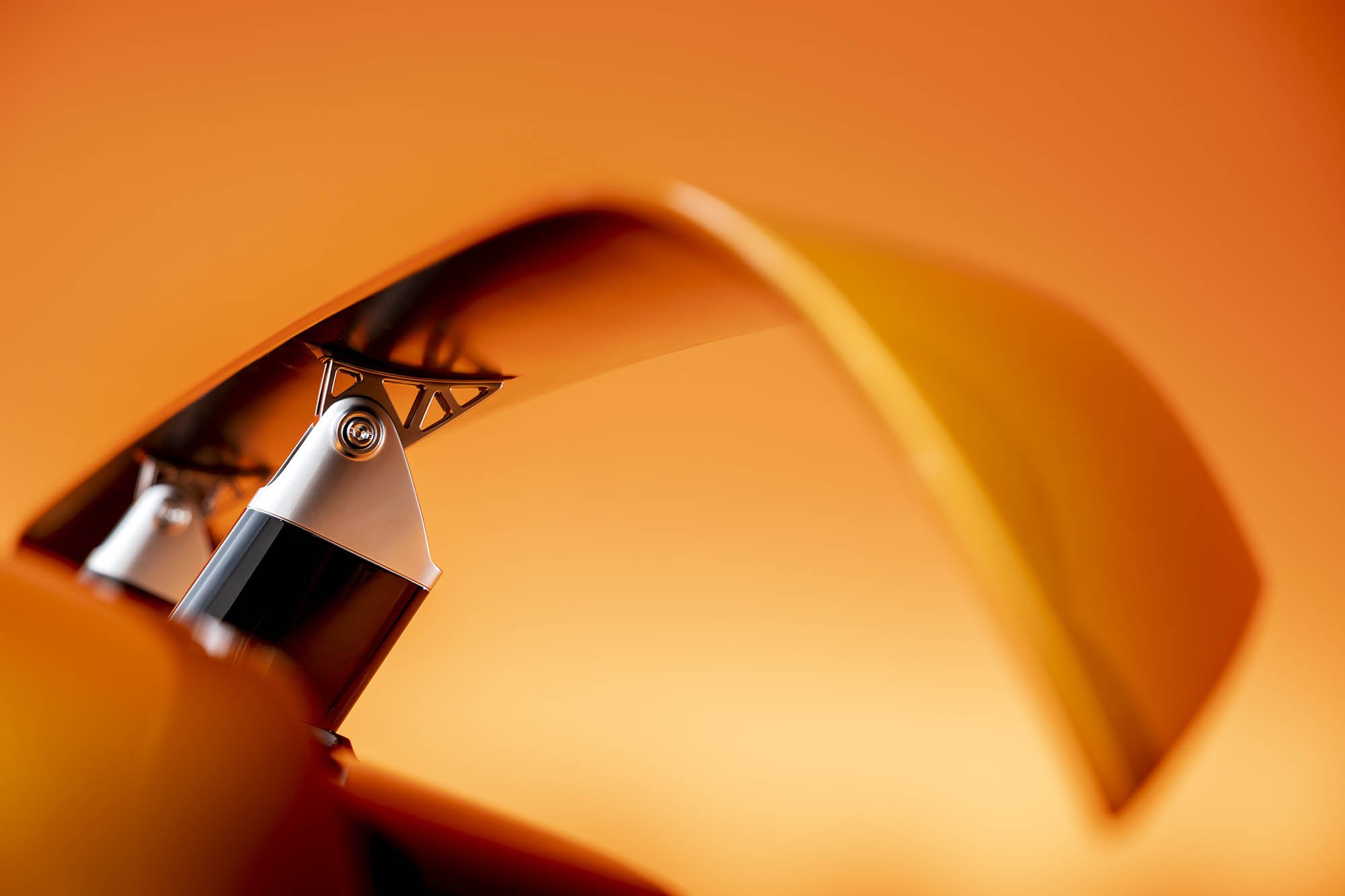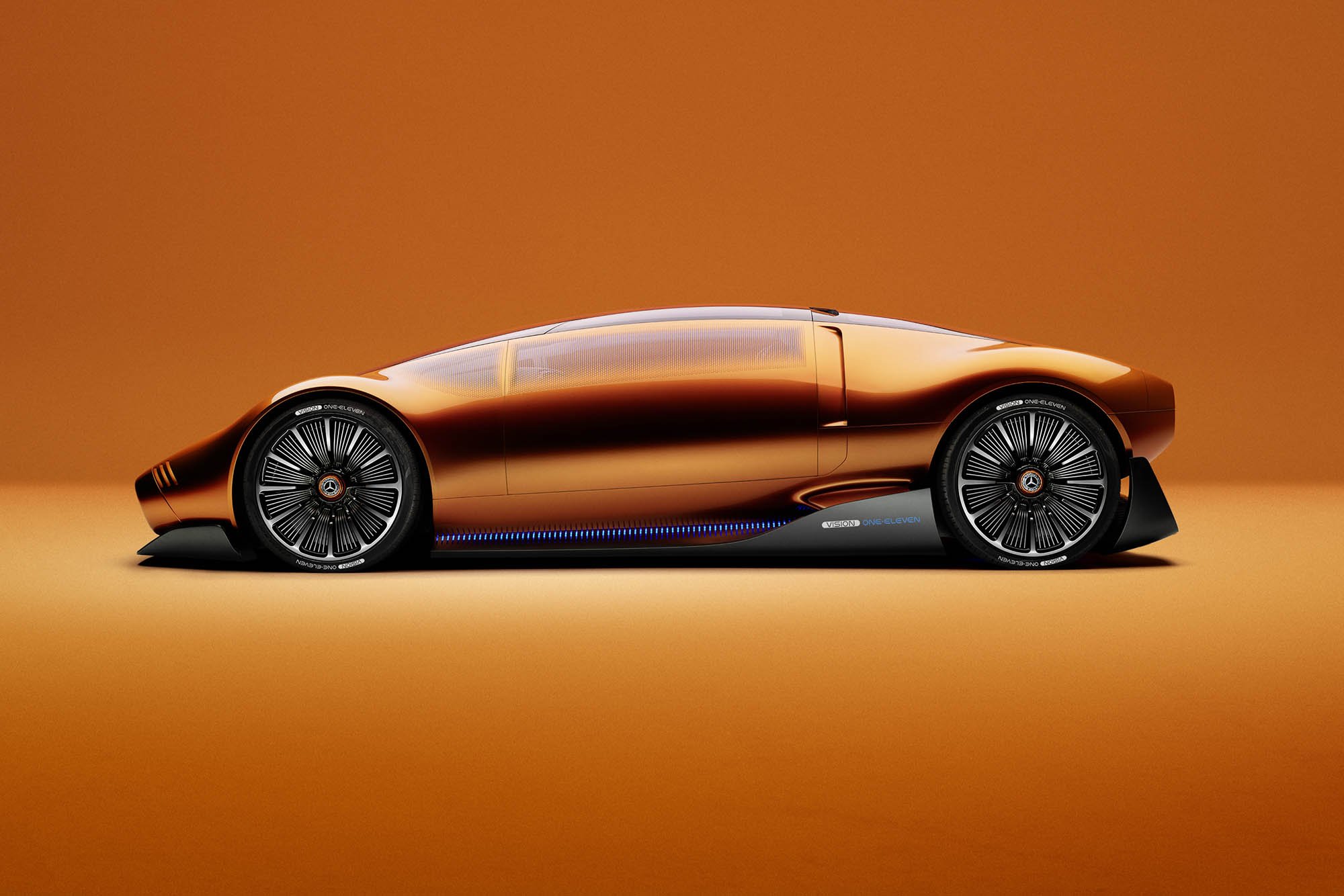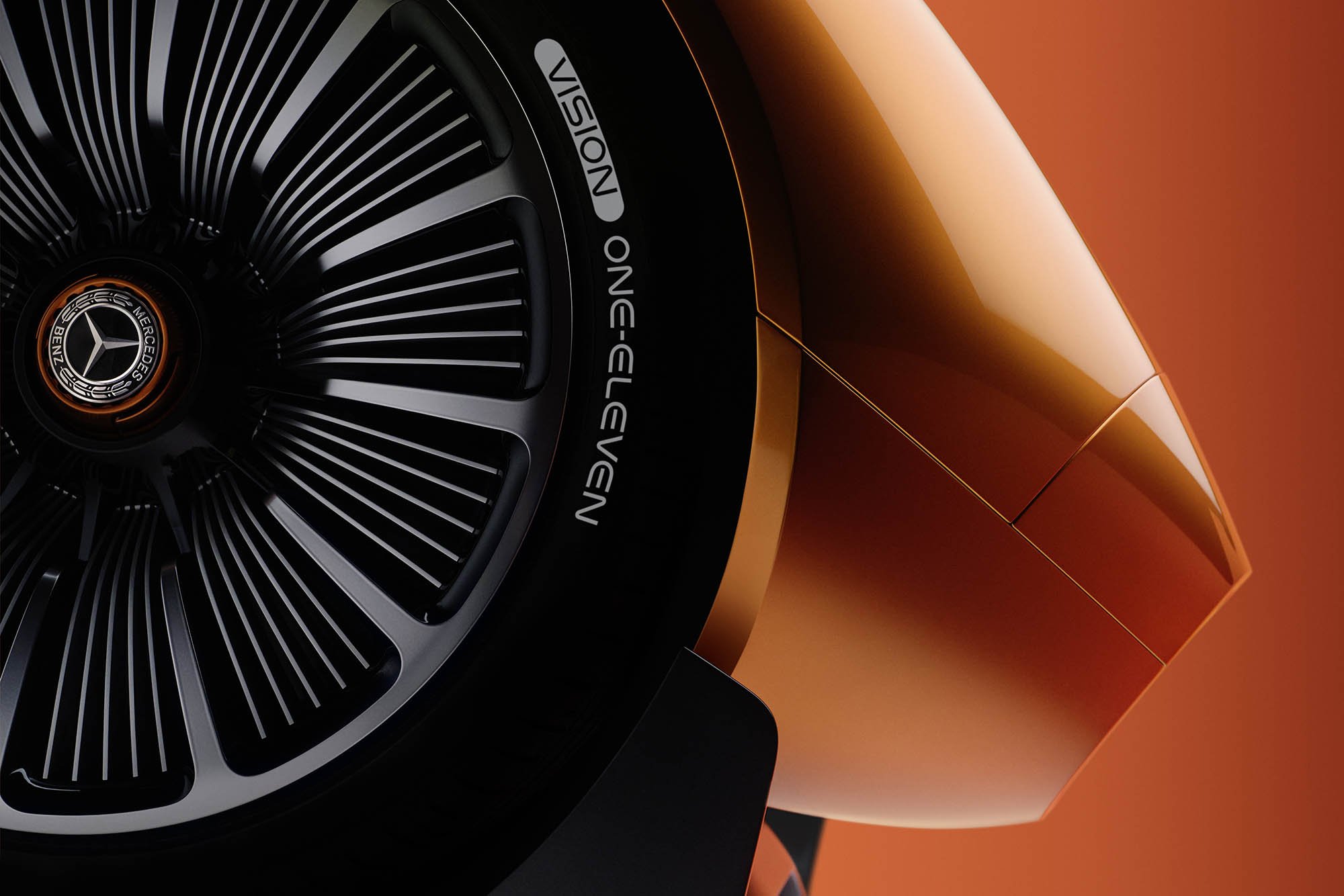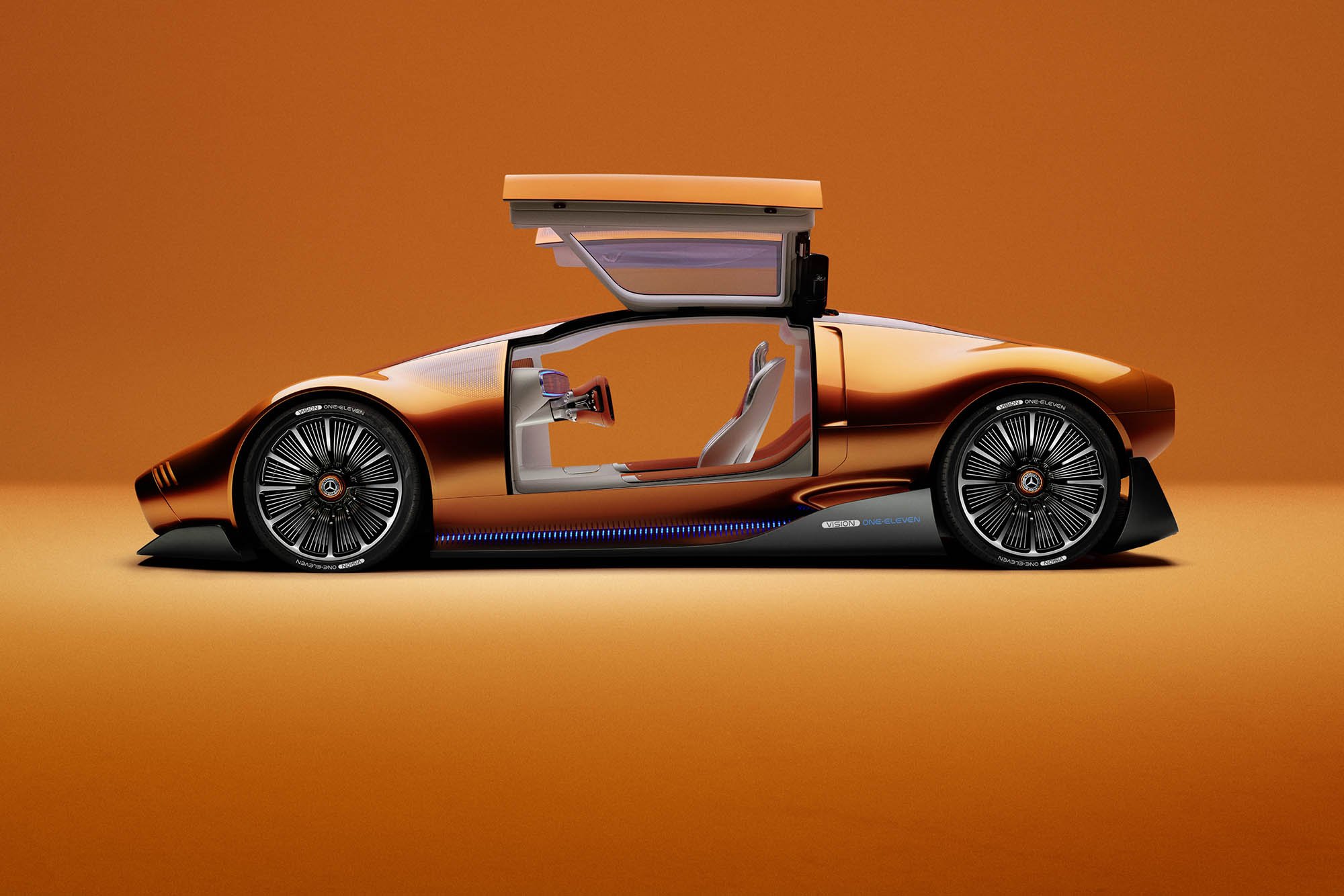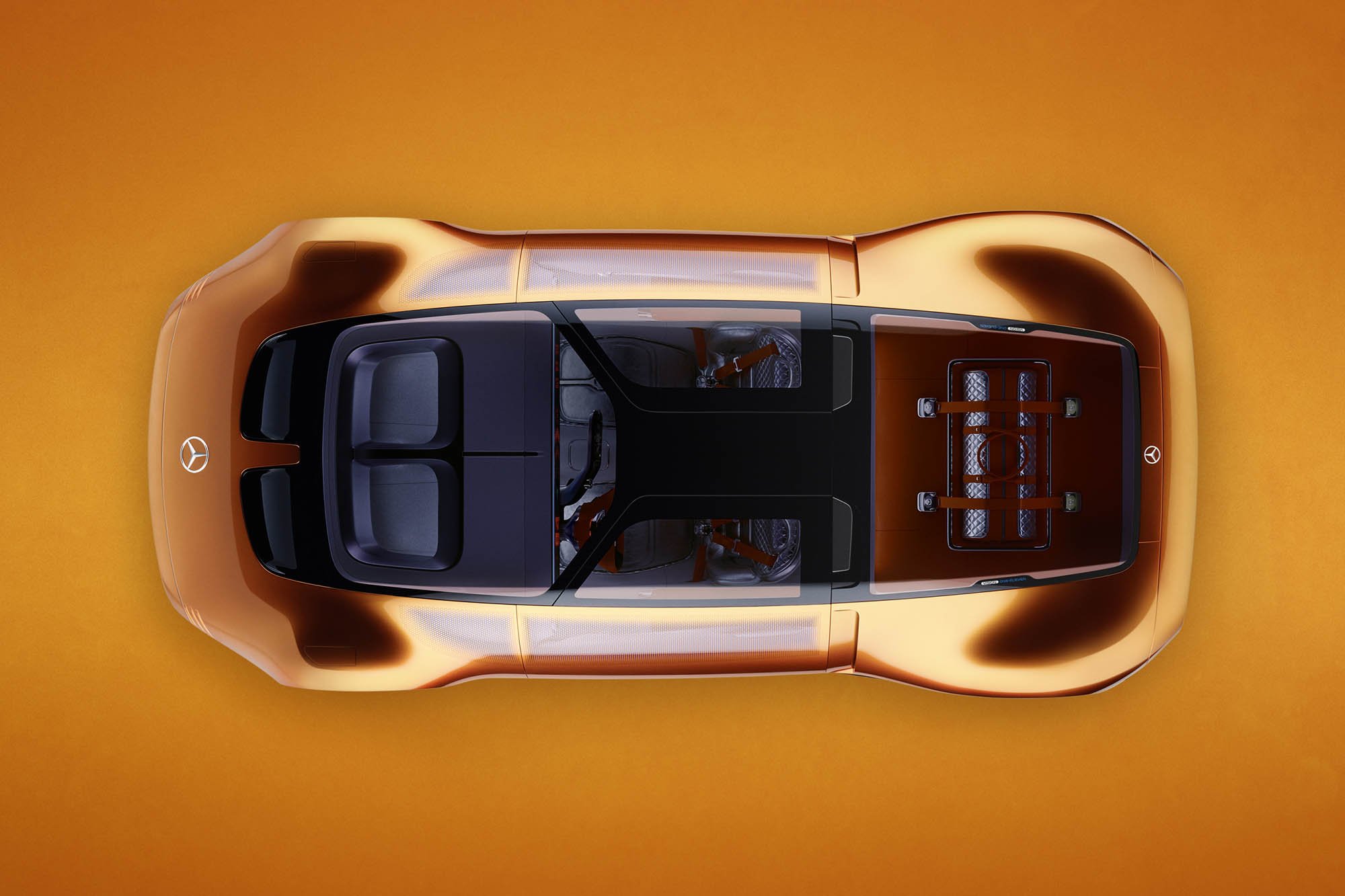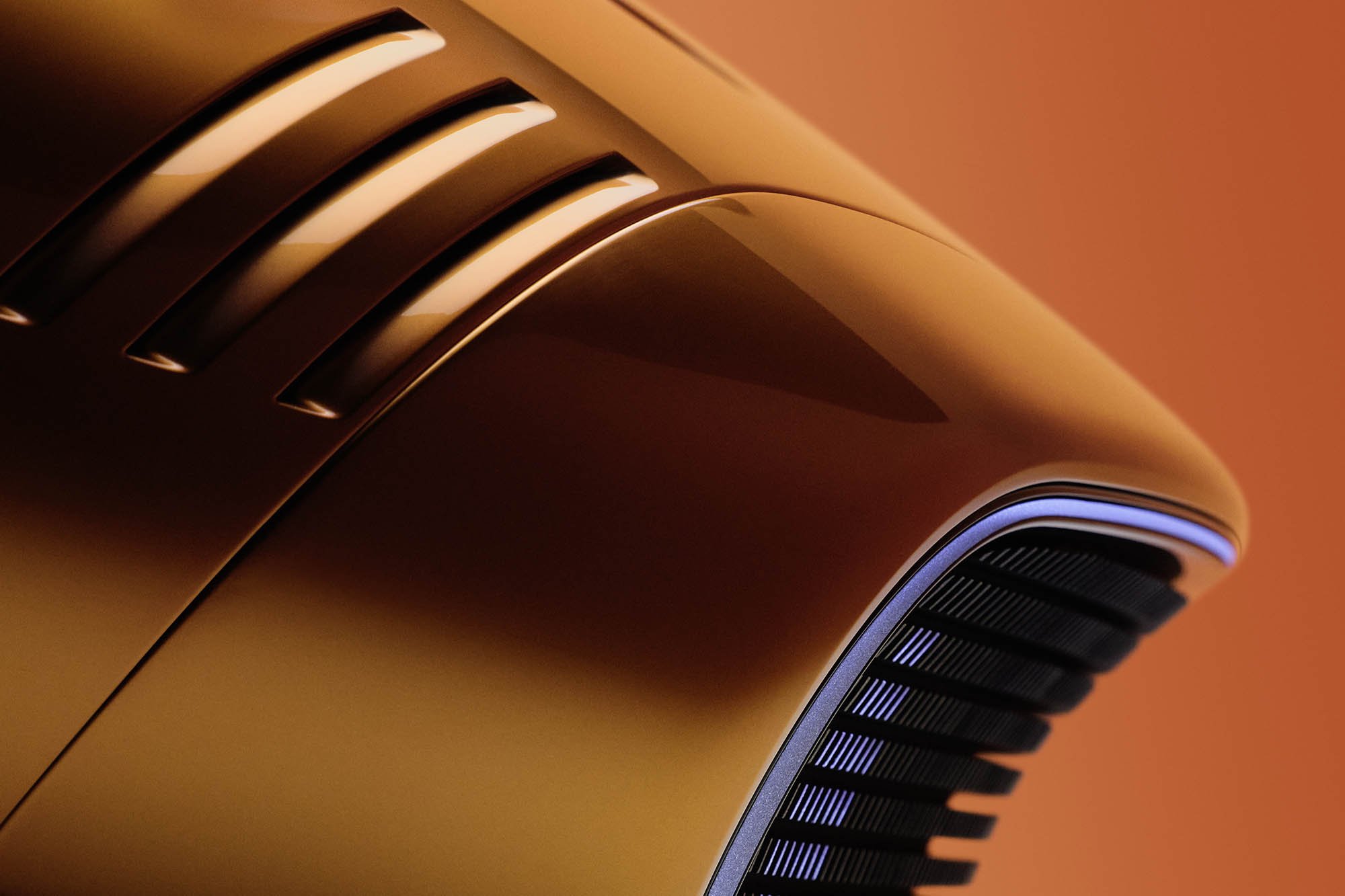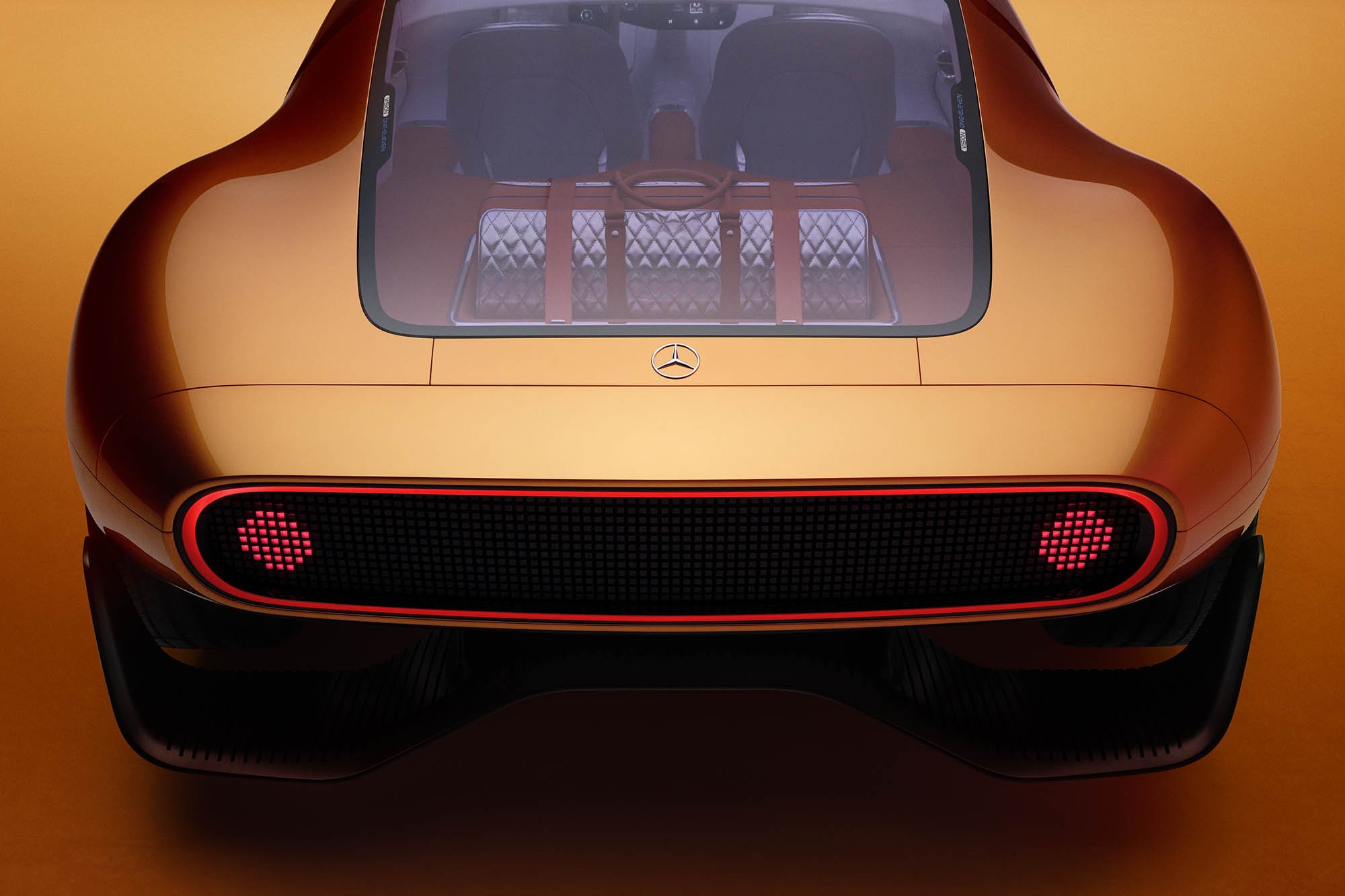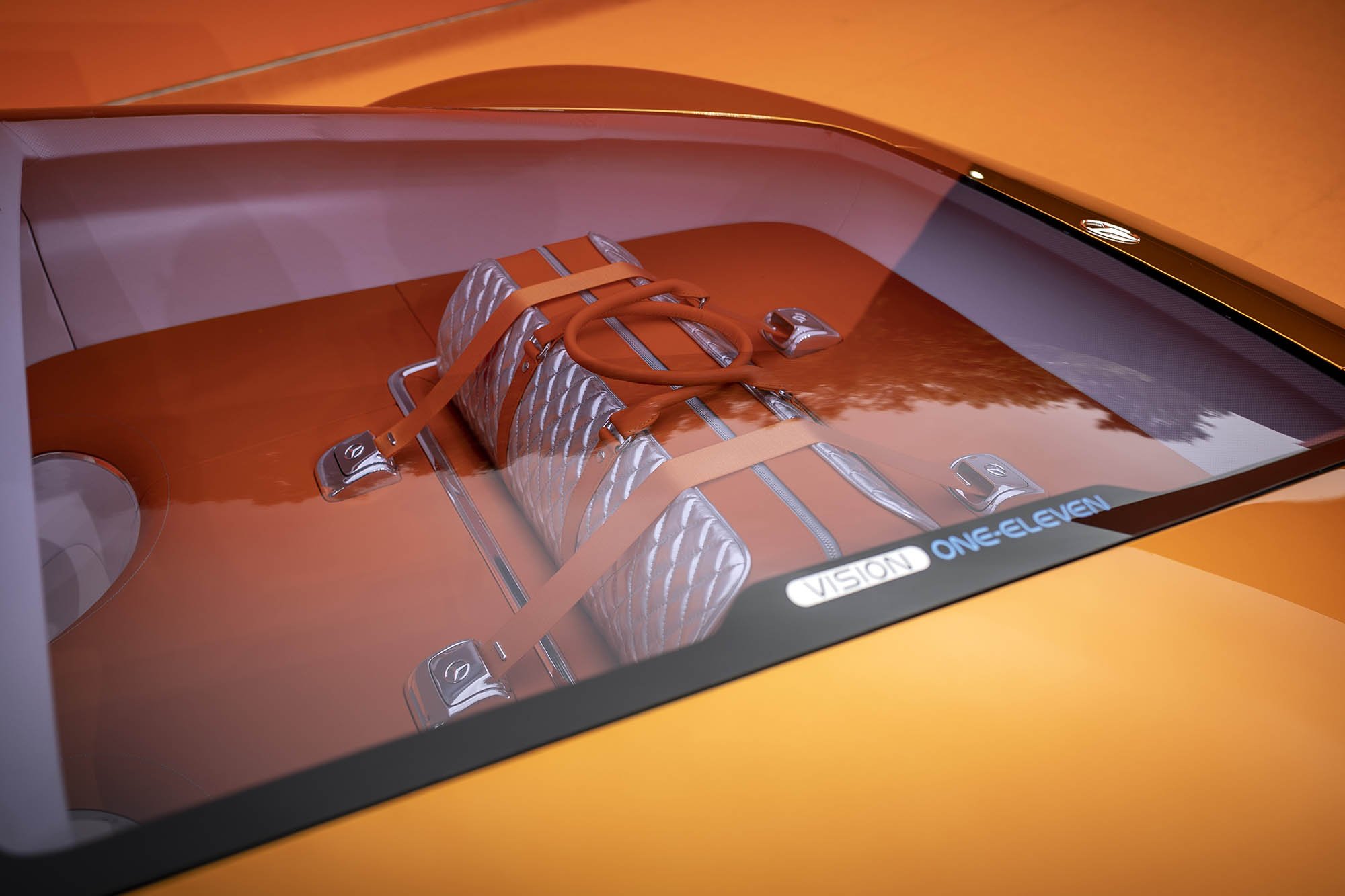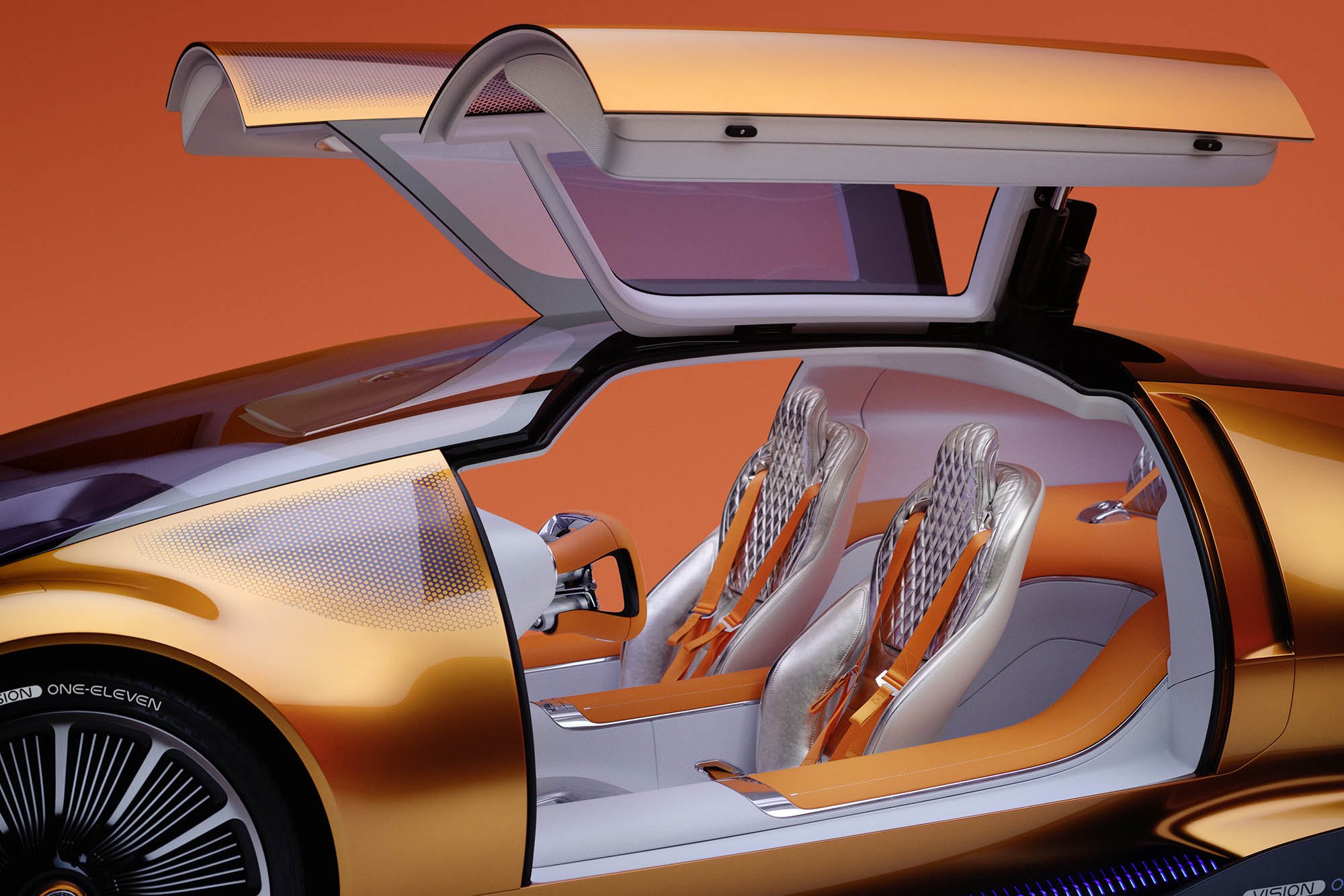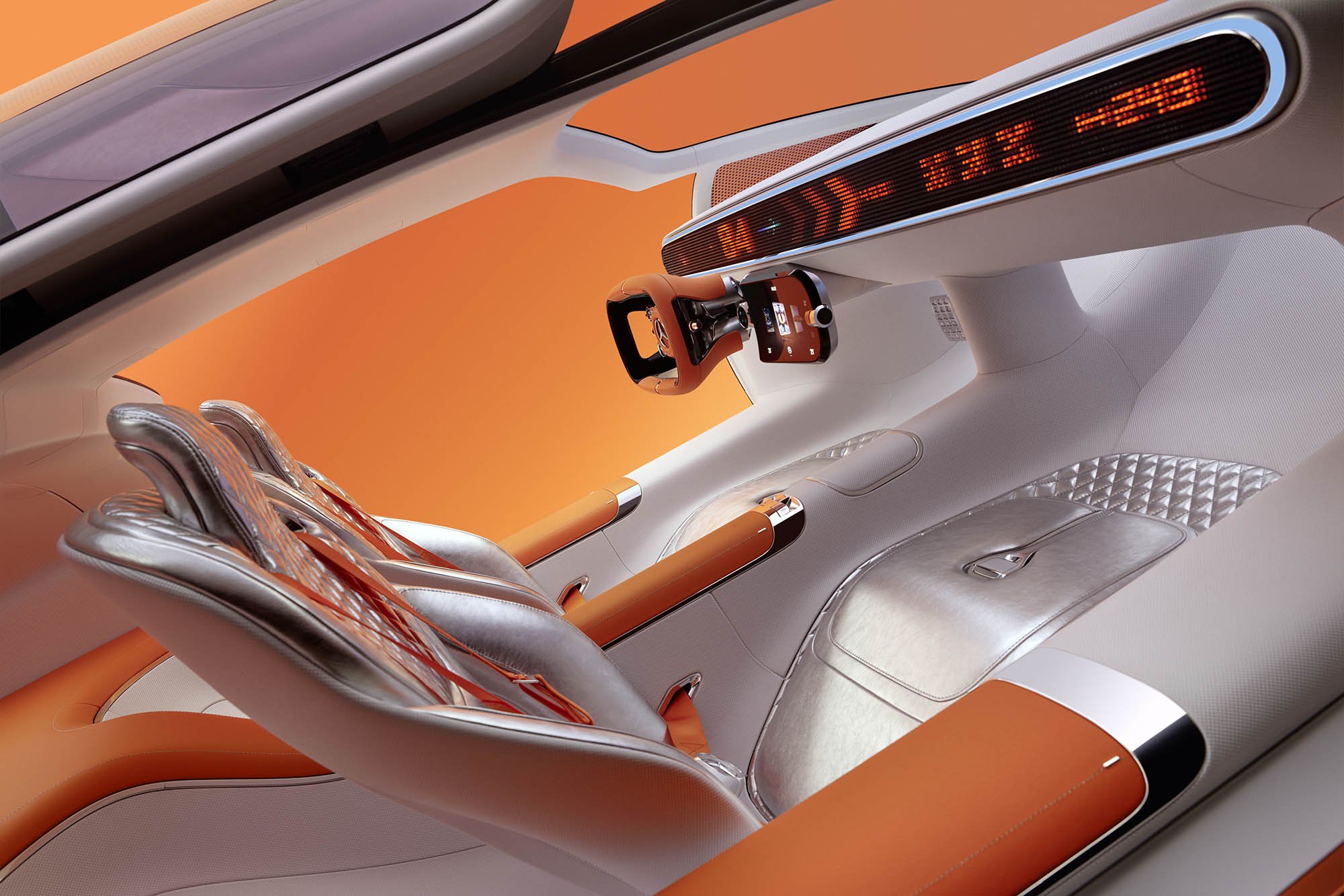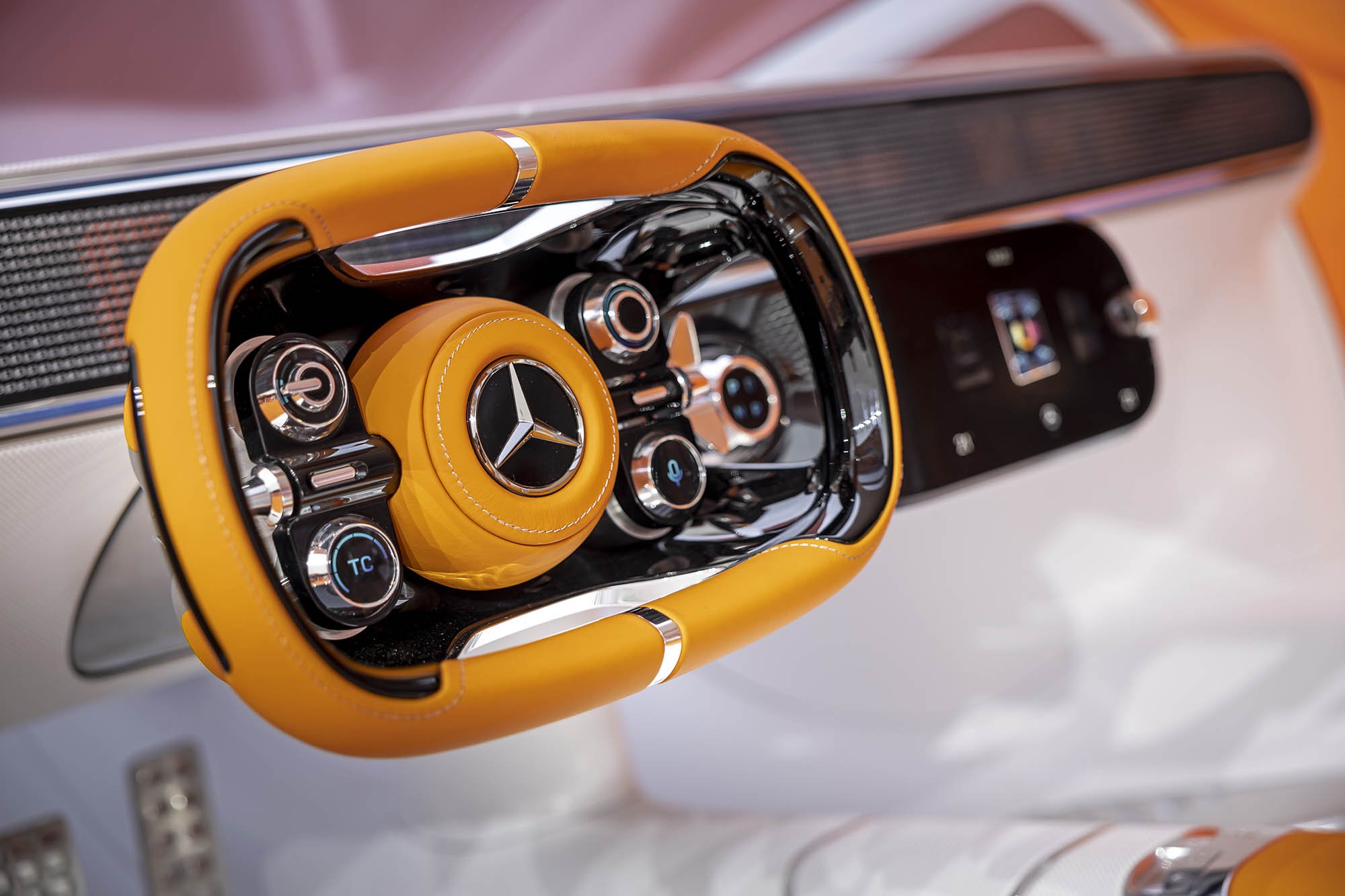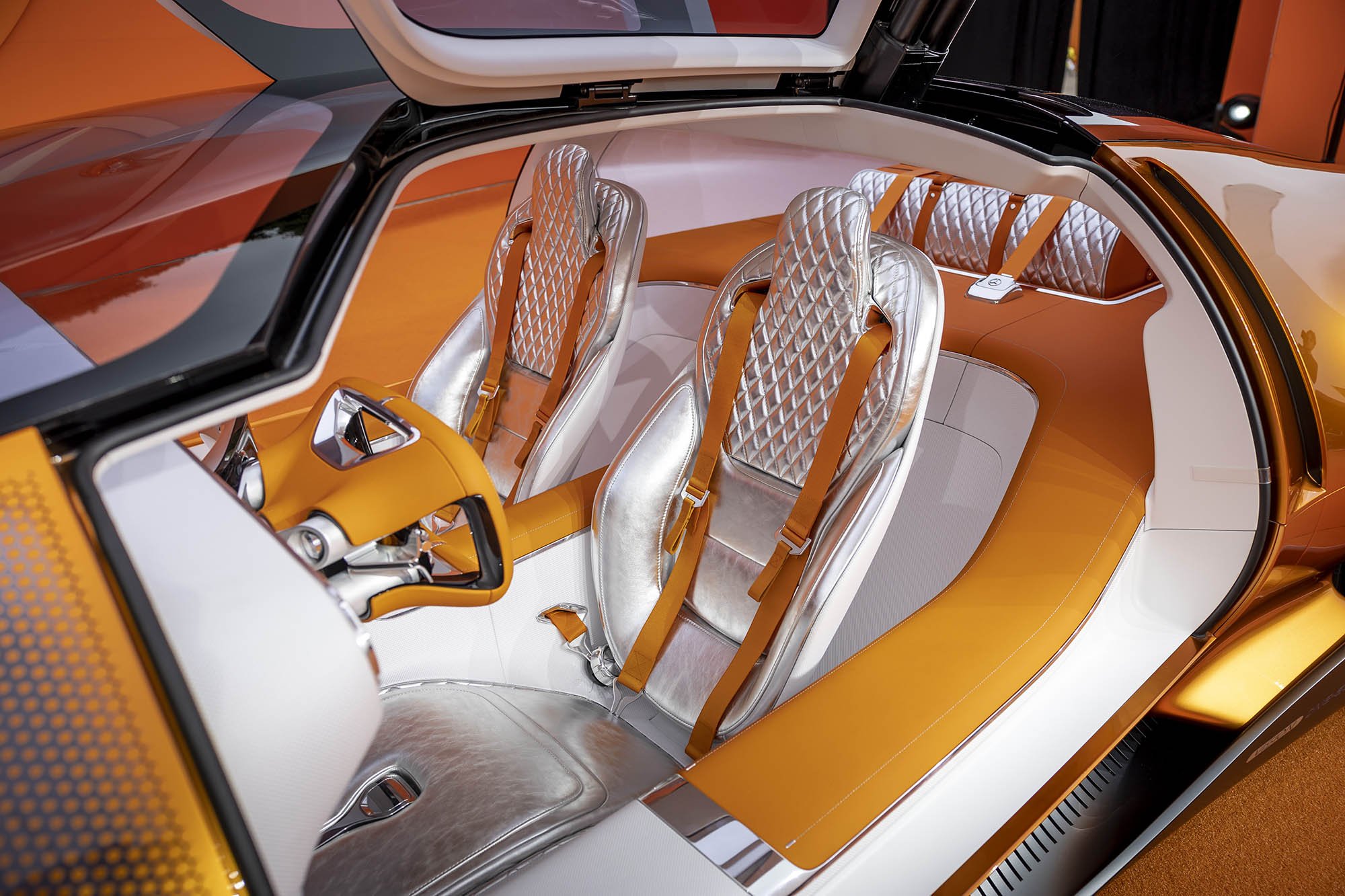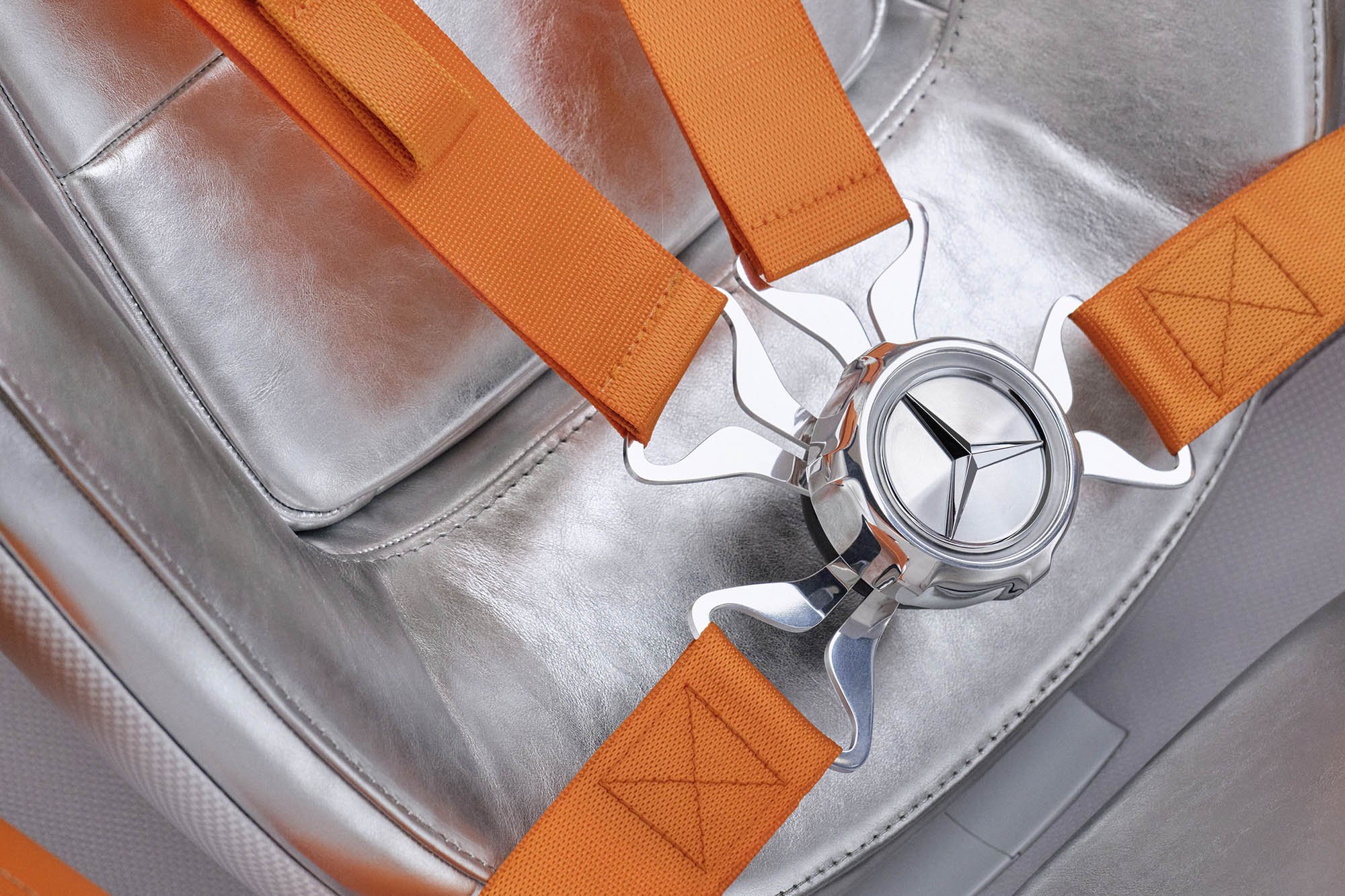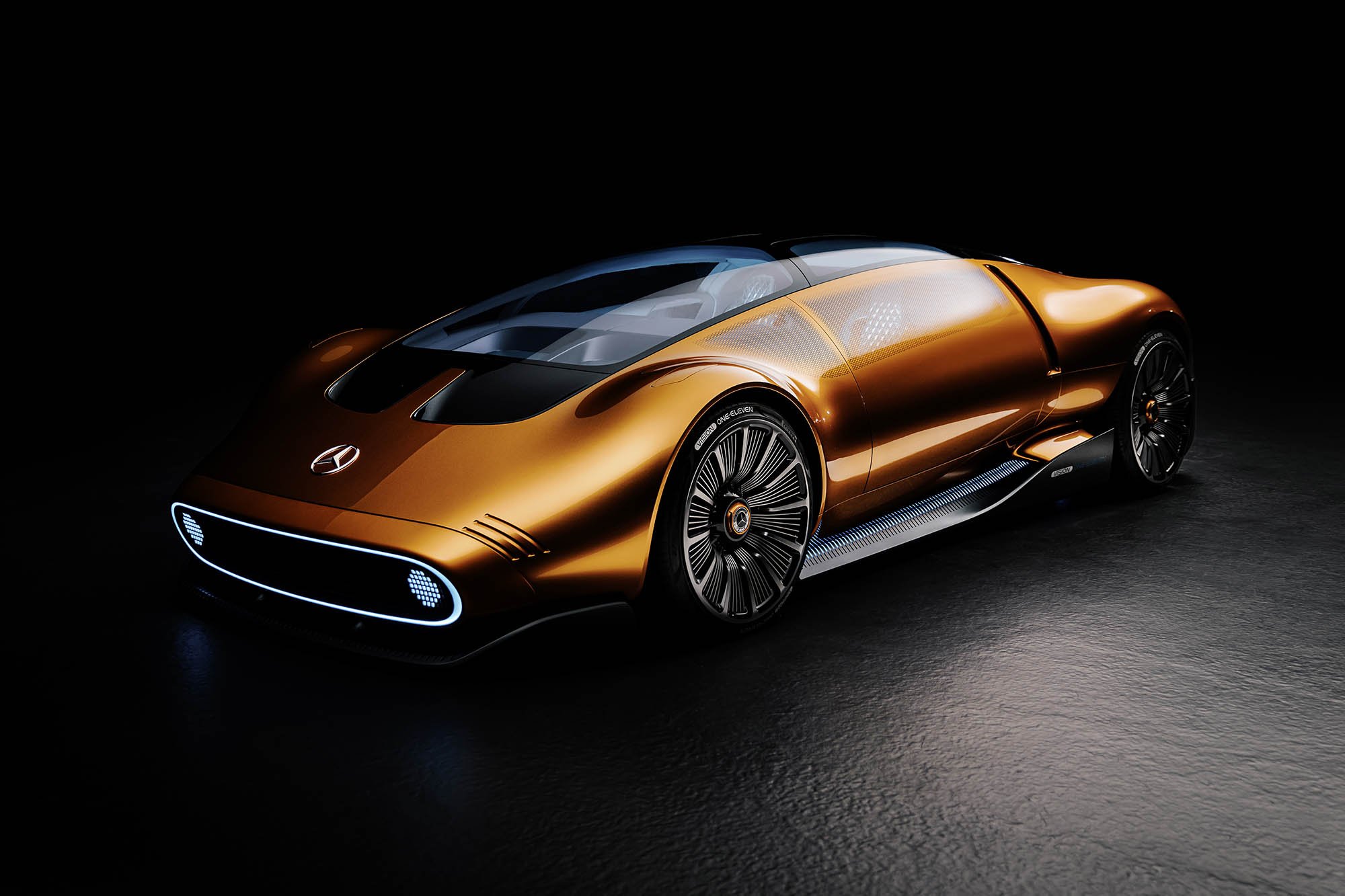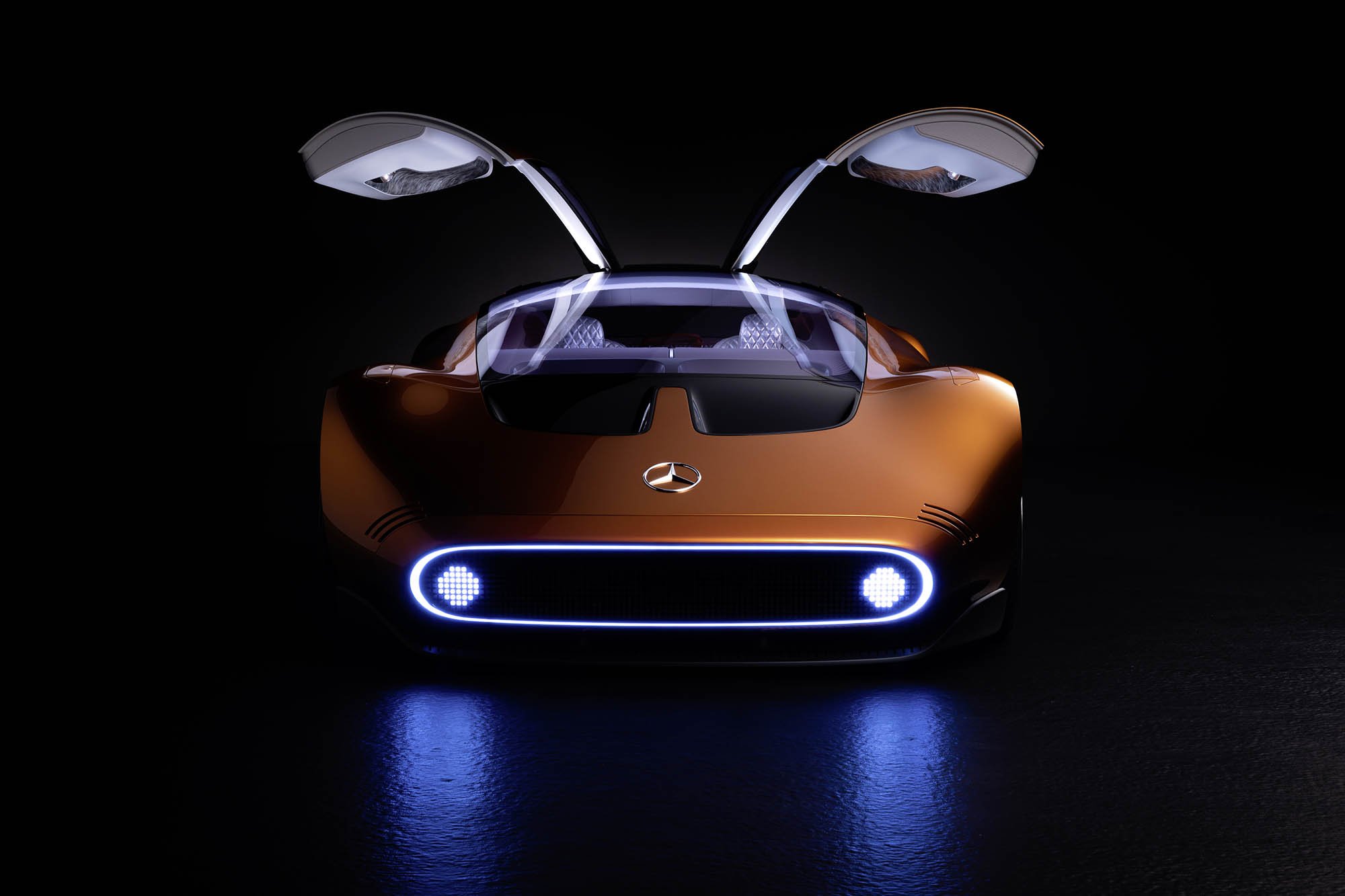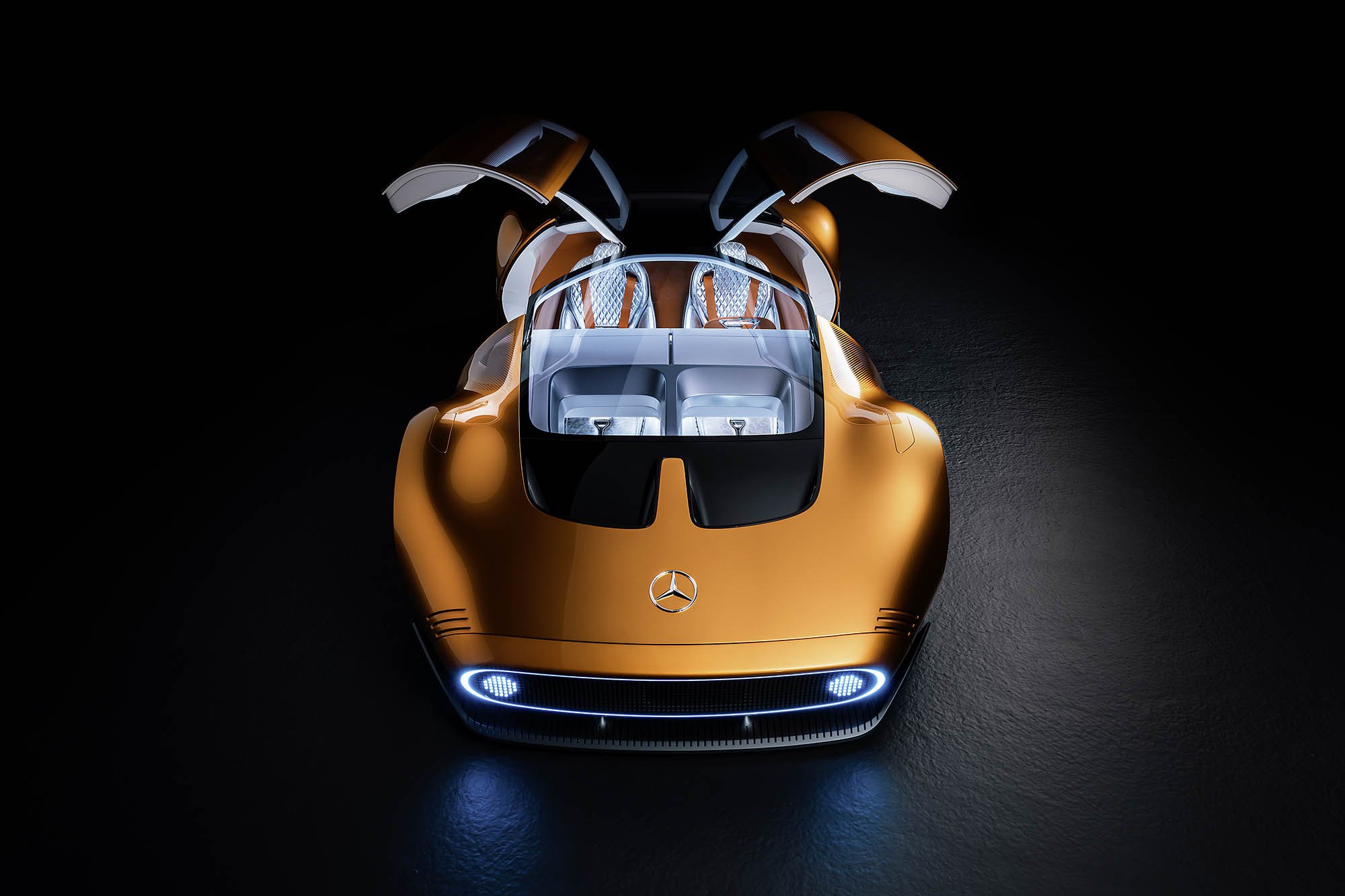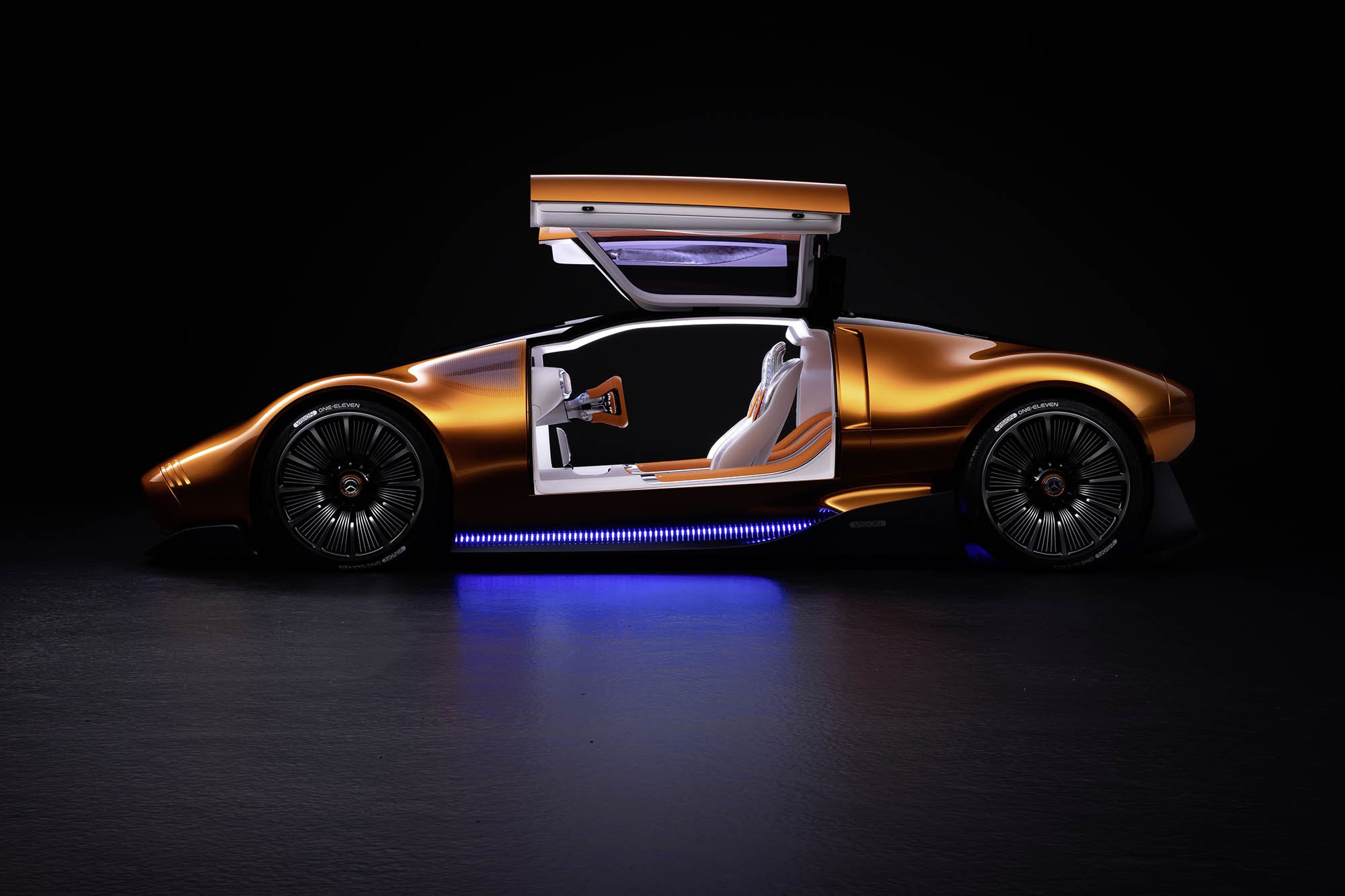Orange Crush
The Mercedes-Benz Vision One-Eleven is inspired by the legendary C111 experimental vehicles from the 1960s and 70s. These prototypes were used to test the revolutionary Wankel and turbodiesel engines, as well as pioneering polymer-based bodyshells. The extremely aerodynamic mid-engine sports cars are considered design icons of their era, not least due to their distinctive gullwing doors and eye-catching orange-and-black paintwork.
The body of the Vision One-Eleven centres on the ‘One-Bow’ design. From the low-slung front end to the muscular hind quarters, it runs in a smooth bow that endows the just 1,170 mm-high vehicle silhouette with an extremely sculptural feel. This harmonises perfectly with the copper-orange paintwork. It provides an unmistakeable reference to the distinctive colour of the C111.
Further notable features of the side view include the flush-fit gullwing doors and the side windows, which are opaque from the outside and camouflaged by a pixelated pattern. Yet another is the large-diameter wheels inserted seamlessly into the wheel arches beneath voluminous flared wings. This reinforces the impression of an uncompromisingly sporty and aerodynamically refined driving machine.
From the frontal aspect, the Vision One-Eleven is powerfully evocative of the C111. In detail, however, there are striking differences: One stand-out example is the distinctive front end, which on both vehicles consists of a low-lying rectangular element with rounded ends left and right. On the C111, this is a closed plastic element with a honeycomb structure, fitted with round foglamps. The corresponding part on the Vision One-Eleven appears very similar at first glance. However, upon closer inspection, it reveals itself as a high-tech feature. The panel is a flexible external display with a 3D pixelated look. It interprets the C111’s characteristic round lights in digitised form and can also convey messages to other road users. In contrast to the C111, it bears a U-shaped and strongly profiled front apron. Above the slender light band, both forefather and descendant show further similarities, most notably the black air intakes on the bonnet.
The rear-end is likewise dominated by a powerfully profiled diffuser. Spanning the breadth above it is a display that echoes the shape of its counterpart at the front end and features the same pixelated structure in the red taillights. Similar to the blade profiles along the sides, blue lighting effects are also visible at the rear. The inner face of the wheels is fitted with circular lighting elements.
Inside it reflects the paradigm shift from self-driven sports car to autonomous electric vehicle within the super sportscar segment and unites two completely different states of being. In race mode with the backrest upright and the compact driver-oriented touchscreen, the interior becomes that of a minimalist driving machine. Conversely, in lounge mode, the seats are fully integrated into the interior sculpture, which merges sills, centre tunnel and luggage compartment into a single unit.
Photos © Mercedes-Benz

